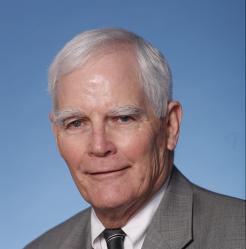Executive Summary
Although the 1996 welfare reform legislation has produced a number of positive outcomes, there are serious issues facing the 107th Congress as it prepares to reauthorize the legislation by October 1, 2002. This policy brief discusses 13 important issues associated with the legislation and the controversy surrounding each of them. The issues include: funding of the Temporary Assistance for Needy Families (TANF) program and whether states will retain the level of funding and flexibility in program design and operation they currently enjoy; the growing concern that some families are worse off as a result of sanctions or time limits, or because they failed to find or retain jobs after leaving welfare; and the concern that too many children are being reared by single mothers. Also at issue for the new Congress is whether there is enough money for child care, if more assistance should be provided to working poor families, and whether more should be done to help mothers qualify for better jobs.
On August 22, 1996, President Clinton signed legislation that substantially transformed the American welfare system. Many of the new law’s provisions, including the TANF program, which replaced the Aid to Families with Dependent Children (AFDC) program, were authorized for six years.
Timing of the Reauthorization Debate
Given the magnitude of the 1996 legislation, there is little question that reauthorization will be a major issue for the new Congress and the new administration, beginning with congressional hearings in 2001 and concluding with reauthorizing legislation that will probably move through the House and Senate during the summer and fall of 2002. It can be expected that there will be extensive hearings by the eight or more committees of jurisdiction in the House and Senate, that the leadership of the House and Senate committees will introduce their own reauthorization bills, that the governors will want a seat at the table during the debate, and that many of the lobbying organizations that played such an important role in passage of the initial 1996 legislation will seek to be actively involved.
In addition to congressional hearings, the Congressional Research Service and the General Accounting Office will publish a score or more reports on various aspects of welfare reform, many of them based on research findings. But the congressional committees with jurisdiction over TANF and related programs will in all likelihood not introduce legislation until late 2001 or early 2002. The Committee on Ways and Means and the Committee on Education and the Workforce in the House will likely act first, bringing a joint bill to the House floor sometime in the late spring or early summer of 2002. The Senate, if it has not acted earlier, will then probably enact its own version of the House bill in late summer. A House-Senate conference committee will fashion the final bill in the fall of 2002.
Purposes of the 1996 Reforms
A question that will pervade the reauthorization debate is what the real purpose of the TANF program is. The 1996 legislation stated that the purposes of the program were to assist needy families, fight welfare dependency by promoting work and marriage, reduce nonmarital births, and encourage the formation and maintenance of two-parent families. Conservatives wanted to emphasize the work and family formation issues while many liberals, although appreciating the emphasis on work, were equally concerned with ensuring benefits and adequate income for needy families.
In the reauthorization debate, the tension between these various goals will continue. Although the restoration of the pre-TANF entitlement to cash benefits seems unlikely, there is bound to be extensive discussion of the provisions that limit benefits for needy families, notably the five-year time limit and sanctions. And given the number of low-income mothers who are now employed, new attention may be paid to the goal of assisting the working poor.
Structure of the TANF Block Grant
The TANF block grant was established as an essentially fixed sum of $16.5 billion per year through fiscal year 2002. A first area of potential conflict during reauthorization is the overall size of the block grant. Fiscal conservatives note that TANF block grant funding levels were set when welfare caseloads were much higher than they are now. Moreover, some states are not using their full TANF block grant allocations.
States argue that Congress initially urged them to build TANF surpluses during prosperous times (because the annual grant level is declining in real terms, and will no longer adjust automatically when the economy goes downhill and caseloads rise), yet now complains when the states do exactly that. If states did spend all their TANF funds now, there is little doubt that when the economy turns sour, federal legislators would change their tune and criticize the states for profligate spending during boom times. Congress is likely to consider several options for the overall structure of the TANF block grant during reauthorization, including smaller annual funding and/or building some counter-cyclical element into the block grant.
A second potential area of conflict is the formula for allocating the TANF block grant among states. The share apportioned to individual states is based on states’ historical allocation of federal AFDC funds. Largely because of state choices in benefit levels under the old AFDC program, poorer states generally receive far fewer federal TANF dollars per poor child than wealthier states. While this may have been justified in the AFDC program, because it was based on a matching formula designed to encourage state spending, it makes little sense with a fixed block grant. Defenders of the status quo argue that whatever the shortcomings of the current allocation formula, reopening the issue is likely to fragment support for TANF and may result in lower overall funding levels.
A third issue is reauthorization of the TANF provision that allocates additional funds to states that have high levels of poverty and high growth rates. Unlike TANF itself, this provision expires in 2001. A total of 17 states now receive money from this supplemental fund which they will lose if the provision is not reauthorized. The debate will be further complicated by the fact that money for this provision is not assumed in the CBO baseline. Thus, Congress must find a funding offset of about $3 billion over five years if the fund is to be reauthorized.
Floundering Families
Another important problem is that a subset of families has not responded well to the new welfare requirements. Before 1996, adults with problems could stay on welfare year after year without having to meet any work or training requirements. But now, most families are being subjected to such requirements and some families appear to be unable to meet them. Studies of mothers leaving welfare show that around 20 percent of them go through long periods without work and many more are without jobs from time to time. Census Bureau data suggest that many of these mothers are likely to live with others—either relatives or boyfriends—who have income, but the stability of these arrangements is unclear. In addition, Census Bureau data show that in 1995 and 1996, mothers with total incomes below about $11,000 actually experienced declines in their total income. Finally, while the overall poverty rate has dropped consistently since 1995, the rate of families in deep poverty (below half the federal poverty level) has actually increased.
Research conducted at the University of Michigan and at the Urban Institute shows that these floundering families often have multiple barriers to employment. These barriers include addictions, disabled children, emotional illnesses, domestic violence, lack of work experience, and poor education. Several states are now developing programs to help these families, but a major question that looms is whether cash welfare will be needed for more than 5 years for such mothers.
These mothers used to simply stay on welfare where they were more or less invisible. Now that mothers are expected to leave welfare by finding a job, the problems of this seriously disadvantaged group are coming more clearly into view—as is the fact that not much is known about how to help them.
Congress will devote substantial attention to this problem and is likely to consider directing research funds at interventions designed to learn how adults with multiple barriers can be helped to hold jobs and become less dependent on welfare. Congress may also consider some loosening of the five-year time limit for families with multiple barriers to employment.
Family Formation
There are several reasons why so many children are growing up in poor, single parent families. The first is the continuing high rates of nonmarital births, including teen births. A concern for this problem animated Republicans during the debate on the 1996 legislation and many provisions to address the problem were included in the 1996 law. Although all the measures of nonmarital births have leveled off for the first time in half a century, and the rate of birth among teens has dropped every year for nearly a decade, the levels are still among the highest in the industrial world. Moreover, few states have made a concerted effort to develop policies to reduce nonmarital births. In fact, several researchers have reported that there is a reluctance among welfare caseworkers to broach issues of sex or marriage with clients.
A related reason for the growth of poor single-parent families is that marriage has declined precipitously, especially in poor communities. In the past, both the federal government and the states have been reluctant to become deeply involved in promoting marriage, in part because of the fear of stigmatizing single parents. However, recent years have seen some movement on this front. Oklahoma has established the promotion of marriage as a major goal of its TANF program and has formed a panel of researchers, practitioners, and advocates to advise the state about policies that can be adopted to promote marriage. In 2000, both Houses of Congress passed legislation that would have reduced the marriage penalty on low-income families receiving the Earned Income Tax Credit (EITC), a program that now provides cash assistance to over 19 million working families. The 107th Congress will almost certainly return to legislation designed to promote marriage among poor families, and to reduce the marriage penalty in the EITC.
Another reason for the growth of poor single parent families is deteriorating economic prospects among low-income fathers. As welfare reform and the strong economy lured millions of poor mothers into the workforce, many of the fathers of their children remained jobless. Indeed, Census Bureau data show that between 1992 and 1999, as the economy boomed and the labor force participation of 20- to 24-year old black females increased from less than 65 percent to nearly 80 percent, the labor force participation of comparable black males actually declined from almost 85 percent to less than 80 percent. By 1999, young black females had a higher employment rate than young black males. Congress has already signaled its interest in this issue by nearly passing legislation in the last session that would have funded a national network of programs designed to promote marriage, better parenting, and employment among poor fathers. Congress will undoubtedly return to this issue as part of the reauthorization debate.
Five-Year Time Limit and Sanctions
Two of the more controversial features of the 1996 law were the imposition of the five-year time limit on use of federal dollars to provide assistance to any adult and the mandatory use of financial sanctions against families that do not comply with program requirements. Given the raucous debate surrounding both of these issues, it would be a surprise if Congress failed to revisit these issues during reauthorization and if Democrats did not introduce legislation to soften the five-year time limit and the use of financial sanctions against recipients.
There are good studies on both of these issues. Briefly, the research on time limits shows that most recipients leave the rolls before the time limit hits, even in cases in which the time limit is much less than 5 years. Not surprisingly, one reviewer concluded that time limits have produced neither the strong positive effects expected by conservatives nor the strong negative effects predicted by liberals. Even so, it is clear that a substantial number of families will hit the five-year time limit in 2001 and every year thereafter.
States now have the flexibility to provide federally financed benefits beyond the five-year limit for up to 20 percent of their caseload and can use their own funds for families that have passed the time limit. But whether this will be enough flexibility to help all the families that hit the time limit—assuming states want to continue providing these families with some benefits or services—is an open question.
One policy reform that is bound to receive attention in the reauthorization debate is whether states should be allowed to stop the time-limit clock for recipients who are working some minimum number of hours per week—perhaps 25.
Research on sanctions shows that many states routinely use them. In some states, as many as a third of the cases are under sanction or have received a sanction, and 35 states use full family sanctions, meaning they can end the entire cash welfare benefit of families that fail to meet requirements. Some research suggests that states use sanctions against families that do not understand why they are being sanctioned and that sanctions are sometimes applied inequitably.
Congress will certainly want to examine these issues and some lawmakers are likely to support legislation that restricts the circumstances under which full family sanctions can be applied and that addresses issues such as adequate notice and due process rights.
Food Stamps and Medicaid
One of the most widely studied and agreed upon problems associated with welfare reform is that a large number of families who are eligible for food stamps and Medicaid are not receiving these benefits. Based on careful research in 12 states, for example, the Urban Institute found that many families leaving welfare are eligible for food stamps but are not receiving the benefit. Similarly, many investigators have shown that families and children are also not receiving the Medicaid coverage to which they are entitled.
The problem in both cases is not that changes in federal statutes during welfare reform rendered families and children ineligible for food stamp or Medicaid benefits. Rather, the problem appears to be that for some reason, families that are eligible under federal statutes do not participate. Under the old AFDC program, families that applied for welfare were automatically given food stamps and Medicaid. But under the TANF program, some applicants are diverted from the welfare program into work and never appear on the rolls, thereby missing out on food stamps and Medicaid. There is also much more turnover in the caseload. Studies show that once a family leaves AFDC or TANF, participation in food stamps and Medicaid declines, perhaps because families have not been informed that they retain eligibility. In addition, working families may find it too difficult and time consuming to report to welfare offices to confirm their eligibility, especially in states where families must actually visit the welfare office, and families with frequent changes of income may be put off by the continuous reporting requirements.
Impacts on Children
As noted earlier, there is little information on whether welfare reform is having an impact on children. On the positive side, the evidence we have suggests either small positive or no effects. However, there are still fears that, especially in the case of floundering families, children could go hungry, be left alone at an early age while their mothers work, or suffer more abuse and neglect as a result of increased stress on their mothers.
Child advocates and others will raise the concern that when the first recession hits or the first wave of families lose benefits as a result of the five-year time limit in 2001, the picture for children could take a sudden turn for the worse. There is little question that Congress will devote considerable attention to these issues during the reauthorization debate.
Child Care
Two child care issues will receive extensive attention during reauthorization: whether states have enough money to pay for care and whether available care is of sufficient quality.
The 1996 reforms created a child care block grant with about $4.5 billion more available for child care over the 1997 to 2002 period than under previous law. In addition, states were allowed to use money from their TANF block grant for child care. Regulating the quality of care was left to states and localities.
Although less than half the families leaving TANF for employment use child care funds, states nonetheless have used all the federal and state dollars in the Child Care and Development Block Grant (CCDBG) and have now used about $3 billion of their TANF funds for child care. Thus, states are purchasing much more care than ever.
Despite this increased funding, critics believe that even more federal spending is necessary, especially since families leaving welfare are provided with child care subsidies while similar low-income families that did not go on welfare but are eligible for subsidies often do not receive them. A widely-cited estimate from the Department of Health and Human Services suggests that existing child care block grant funding provides enough money to serve only 12 percent of all eligible low-income children. There is also continued concern about the quality of care and the federal role in promoting better care through federal or state regulation or by providing federal funds that states must use to improve quality.
Supports for Working Families
Assistance for the working poor has increased dramatically since the early 1980s, with expansions of the Earned Income Tax Credit being the most prominent example. But reauthorization will almost inevitably catalyze a debate about whether a mother who has moved into the low-wage job market has enough income to adequately support her family. Those who believe she does will point to the numerous benefits already available to such families, including the EITC, child care, food stamps, Medicaid, and enhanced child support. Further expansions are likely to be expensive and could lead to permanent dependence on government support. Others will press for more assistance, whether in the form of a higher minimum wage, an expanded EITC, greater subsidization of child care and health care, more money for education and training, or other work supports. They will argue that in the absence of such assistance, high rates of poverty and living at the margins of society are likely to continue.
Work Programs
The vision of those who supported work requirements in the 1996 reforms was that every state would have an increasing percentage of its caseload actively involved in work programs for 25 or 30 hours per week. However, because all states have reduced their caseloads and caseload reductions can be used to meet the work requirement, states have been able to meet the work requirements without starting programs in which welfare recipients work in exchange for their benefits.
Advocates of work programs may propose a requirement, separate from the current work participation standard, that states place some fixed percentage of their caseload, perhaps 20 percent or more, in work programs. Supporters of this proposal will argue that adults on welfare should work, that properly designed work programs provide valuable work experience to mothers with barriers to employment, and that having work experience positions available will be especially important as the rolls expand during recessions. States can be expected to vigorously oppose additional work participation mandates.
Child Support Enforcement
The child support program appears to be improving steadily. However, two problems seem nearly certain to receive attention during the reauthorization debate. First, as demonstrated by a 405 to 18 vote in the House during the 106th Congress, many members of Congress, and both conservative and liberal advocacy groups, believe more child support collections should be paid to families. Under current law, the state and federal governments can retain all payments by fathers while mothers are on welfare and around half the payments on overdue child support after mothers leave welfare. There seems to be nearly universal agreement that all payments on overdue child support should go to mothers, not the government, once mothers leave welfare, and somewhat less, but still considerable, agreement that mothers should receive at least part of the fathers’ payment while they are still on welfare. Powerful members of Congress from both parties will make this issue part of welfare reauthorization.
Second, states can be expected to have increasing difficulty financing their child support enforcement programs. The average state now receives around 30 percent of the money it uses to finance its child support program from retained collections in welfare cases. Because the welfare caseload has been in such precipitous decline since 1994, these collections have shrunk. Some states are already experiencing this problem. As a result, states can be expected to come to Congress and ask for additional child support funding. The strong backing for distributing more collections to mothers on welfare will aggravate this problem, thereby making the issue even more important during the reauthorization debate.
Education, Job Retention, Job Advancement
There are three issues in this area that are likely to receive attention during the reauthorization debate. First, during the original debate on welfare reform, Democrats expressed great concern that the law did not place greater emphasis on education and training. At a minimum, there will almost surely be amendments to expand the number of hours of education that can count toward fulfilling the work requirement. Republicans may oppose these amendments on grounds that welfare mothers can combine work and education now, and that states already have enough flexibility to increase education even if it does not count toward the work requirement. Moreover, because of the rapid decline in the welfare rolls, states have much more money available for education than they had before welfare reform.
A second issue is that research shows clearly that mothers who leave welfare for work often lose their jobs in a few weeks or months. Some of the job terminations are voluntary and even those that are not may be caused by factors over which mothers have some control, such as missed work, lateness, or conflicts with peers or supervisors. Program operators and researchers believe that programs are needed that help mothers retain their jobs longer or find new ones quickly. A number of studies of model programs that attempt to help mothers adjust to the workplace and retain their jobs are now underway. Again, Congress is likely to search for ways to require or encourage states to launch such job retention programs.
Beyond helping mothers simply keep their jobs, a third important issue involves steps that states can take to help mothers achieve career advancement. Previous programs aimed at helping low-income adults train for and then obtain jobs that involve moderate to high levels of skill have not been very successful. But now that two million or so additional low-income mothers are working, the debate is likely to intensify about how to help them get the education and training they need for better jobs. A related issue is how to improve cooperation at the local level between TANF and the other federal and state programs designed to promote work. Congress may also debate measures allowing states to experiment with granting former TANF recipients who lose jobs greater access to unemployment insurance.
Policy for Recessions
As in 1996, there is bound to be extensive discussion of what will happen to mothers who leave welfare for jobs when the next recession hits. Many advocates fear that layoffs will disproportionately affect former welfare mothers because of their limited skills and experience. Moreover, most of the mothers who lose jobs do not qualify for unemployment insurance because they have not worked enough hours to qualify or because they left their job voluntarily.
During the 1996 welfare reform debate, most members of Congress wanted to ensure that states would have enough money so that unemployed mothers could return to welfare. Thus, the 1996 legislation contained a fund from which states could borrow money and a contingency fund that provided modest sums of money to states that suffered high unemployment or similar signs of economic distress.
These two measures, both modest, are widely perceived as inadequate to ensure that states will have enough money to pay benefits during recessions. Critics also point out that the old AFDC program automatically adjusted during recessions because increased federal funding flowed to states as they added new cases to the welfare rolls. This issue will be especially intense if the nation faces an economic slowdown during the reauthorization debate.
The Political Environment for TANF Reauthorization
Congress must act on TANF and related programs before October 2002. But several factors make changes as dramatic as those that were enacted in 1996 unlikely. The political impetus for dramatic reform has been tempered both by the 1996 law, which abolished the extremely unpopular AFDC program, and by dramatic declines in caseloads since the early 1990s. The absence of a strong commitment by President Bush to substantial reform (unlike 1992, when President Clinton promised to “end welfare as we know it”) narrows the likely scope of reform and means that Congress may take the lead during reauthorization. And the very tight margins of control in Congress mean that neither conservatives nor liberals will have strong leverage for enacting their preferred reforms. The general satisfaction of the states with the status quo also weakens the impetus for reform.
Substantial uncertainties remain, however. The biggest unknown is the state of the economy during 2002, when Congress is most likely to be considering reauthorization legislation in detail. If the U.S. economy is in recession at that point, Congress is likely to give increased attention to problems confronted by floundering families—especially if there is evidence that mothers who have left TANF are having greater difficulty in obtaining and keeping jobs. A recession is also likely to lower legislators’ concerns about states “hoarding” money, and increase the probability that provisions making the TANF block grant sensitive to economic conditions are added.
The other significant unknown is the content of the flood of research findings that will emerge over the next year. Findings that states are supplanting their funds with federal money, for example, would increase legislators’ determination to put tighter controls on use of federal money. Research that shows deterioration in the welfare of children in the poorest families would certainly increase attention to problems of those families. What is critical over the next eighteen months is that policymakers have access to high quality, reputable and user-friendly interpretations of emerging research. Making that research available is the objective of this series of policy briefs.
The Brookings Institution is committed to quality, independence, and impact.
We are supported by a diverse array of funders. In line with our values and policies, each Brookings publication represents the sole views of its author(s).





